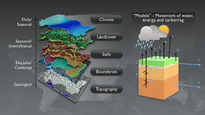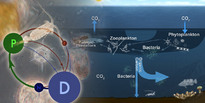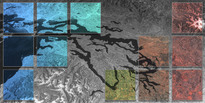Aquatic Biogeochemical Cycling (ABC)

Simulating nutrient and plankton dynamics within a marine circulation model
The Aquatic Biogeochemical Cycling (ABC) Model is designed as a modular component for simulating basic nutrient and plankton dynamics within physical circulation models. The ABC model was developed as a flux-based model suitable for Pacific Northwest aquatic ecosystems, with the goal of having a common tool applicable to regional planning, scientific inquiry, and education. The model simulates nitrogen and phosphorus, inorganic nutrients, oxygen, dissolved and particulate organic compounds, and three types of phytoplankton and zooplankton. The model has been developed to be modular, so that it can be linked to any other physical circulation model.
The Aquatic Biogeochemical Cycling Model was developed to meet the need for understanding the biogeochemical and planktonic dynamics within Puget Sound. The modeling development was initially funded through the PRISM project. Additional funding has derived from the Puget Sound Marine Environmental Models that led to model development through a partnership among the University of Washington, Washington Department of Ecology, and King County Department of Natural Resources and Parks (KC-DNRP) researchers.





